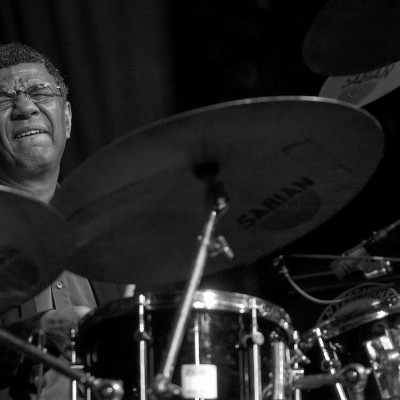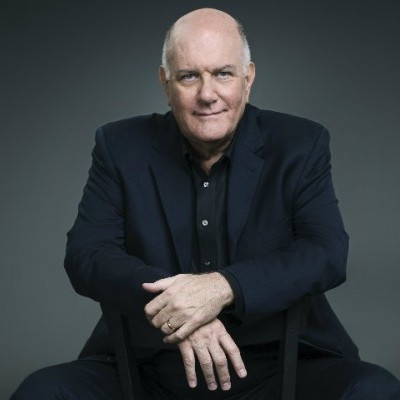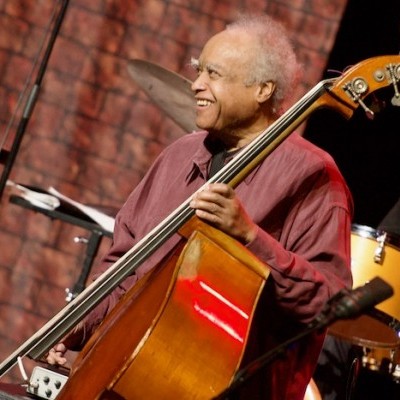Oct 28, 2025 10:47 AM
In Memoriam: Jack DeJohnette, 1942–2025
Jack DeJohnette, a bold and resourceful drummer and NEA Jazz Master who forged a unique vocabulary on the kit over his…

Jerry Bergonzi’s new album, The Seven Rays, was partially inspired by his interest in philosophy.
(Photo: Michael Jackson)The artist’s return was long overdue: When Jerry Bergonzi set foot inside Chicago’s Green Mill on Jan. 4, it marked his first visit to the city since a tour with pianist Dave Brubeck 40 years ago. The Boston-based tenor saxophonist brought his longtime ally, drummer Adam Nussbaum (whom he has nicknamed “The Instigator”), in from New York, along with pianist Bill Carrothers and bassist Billy Peterson.
“Jerry has a wonderful sound, feel, vocabulary,” Nussbaum enthused. “We have a bond of respect for the masters who came before us. We dip into a shared well.”
Many Chicago jazz musicians showed up for Bergonzi’s two-night stand at the historic club, including saxophonist Ken Vandermark. “Kenny used to come hear me play in Boston with his dad,” said Bergonzi, who maintains a long-term, weekly residency at the Lilypad in Cambridge, Massachusetts, and has been teaching at New England Conservatory since 1995.
During his visit to the Windy City, The Gonz, as he’s affectionately known, conducted a workshop at PM Woodwind in nearby Evanston, Illinois, putting his protean tenor prowess on intimate display beside bassist Eric Hochberg. During an investigation of “I Can’t Get Started”—a tune the young Bergonzi would play on bass in insalubrious joints in Massachusetts early in his career—the saxophonist demonstrated fiendish rhythmic and harmonic ingenuity, as well as his penchant for dramatic gritty texture, segueing from saxophone to piano, mid-solo, to further explore the form. Later, Bergonzi took to the drum kit, illustrating how he clusters asymmetrical beats to maintain variety in his playing.
Bergonzi, 71, is a musician’s musician, yet his highly original and harmonically audacious compositions remain accessible, despite exploratory blowing, thanks to the various grooves delivered by his accompanists.
Titles to Bergonzi’s myriad compositions can occasionally be knowing or throwaway addendums, such as “To Whom It May Not Concern.” When asked about “Gecko Plex,” an evocative composition from his 2007 album, Tenorist (Savant), Bergonzi chuckled, noting that the piece was named by the droll Nussbaum.
Bergonzi’s conception resists comparison. His elliptical imagination and a passing syntax occasionally conjure Wayne Shorter, but he’s resolutely singular. The Seven Rays, his 13th album on Savant, was recorded in 2015 but wasn’t officially released until April 12. “Jerry brought us The Seven Rays to produce in a short run for him to sell off the bandstand while on tour,” explained HighNote/Savant staffer Ray Osnato. “We held it in the can for a bit, releasing his amazing Spotlight On Standards [2016] and Dog Star [2017] discs before putting out Rays on the commercial market.”
The “Seven Rays” refer to manifestations of energy, abbreviated by Bergonzi into conditions of “Intention,” “Magnetism,” “Creation,” “Harmony,” “Knowledge,” “Devotion” and “Order.” His sophisticated themes extrapolating these states of being are superbly realized on the album by the young European rhythm section of Carl Winther (piano), Johnny Aman (bass) and Anders Mogensen (drums).
“When I was a teenager,” Bergonzi recalled, “I discovered the theosophical volumes of Alice Bailey, who proselytized, after her predecessor—philosopher Helena Blavatsky—about the Seven Rays. Bailey was an esoteric thinker who devised unconventional ways to explain astrology and other phenomena in the early 20th century.”
Notwithstanding his cosmic conceit for the album and its porous soundscape, consummate terra firma skills are on display, particularly on the suitably demanding “5th Ray: Knowledge,” on which Bergonzi lock-steps with clear-toned trumpeter Phil Grenadier. “I’ve been working with Jerry for about 17 years now, and this is my fifth CD under his leadership,” Grenadier commented via email. “He’s a complete musical master, yet very humble. ... He has a Zen-like approach to life ... a true depth of knowledge about music making. He is still developing, and that is inspiring.” DB

Jack DeJohnette boasted a musical resume that was as long as it was fearsome.
Oct 28, 2025 10:47 AM
Jack DeJohnette, a bold and resourceful drummer and NEA Jazz Master who forged a unique vocabulary on the kit over his…

D’Angelo achieved commercial and critical success experimenting with a fusion of jazz, funk, soul, R&B and hip-hop.
Oct 14, 2025 1:47 PM
D’Angelo, a Grammy-winning R&B and neo-soul singer, guitarist and pianist who exerted a profound influence on 21st…

Kandace Springs channeled Shirley Horn’s deliberate phrasing and sublime self-accompaniment during her set at this year’s Pittsburgh International Jazz Festival.
Sep 30, 2025 12:28 PM
Janis Burley, the Pittsburgh International Jazz Festival’s founder and artistic director, did not, as might be…

Jim McNeely’s singular body of work had a profound and lasting influence on many of today’s top jazz composers in the U.S. and in Europe.
Oct 7, 2025 3:40 PM
Pianist Jim McNeely, one of the most distinguished large ensemble jazz composers of his generation, died Sept. 26 at…

Drummond was cherished by generations of mainstream jazz listeners and bandleaders for his authoritative tonal presence, a defining quality of his style most apparent when he played his instrument unamplified.
Nov 4, 2025 11:39 AM
Ray Drummond, a first-call bassist who appeared on hundreds of albums as a sideman for some of the top names in jazz…